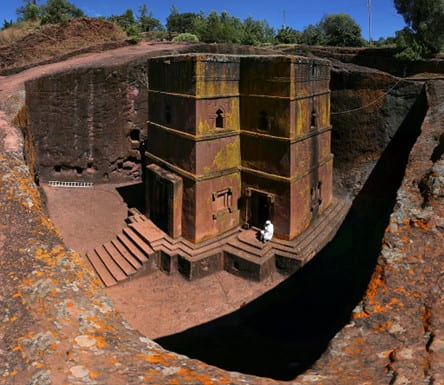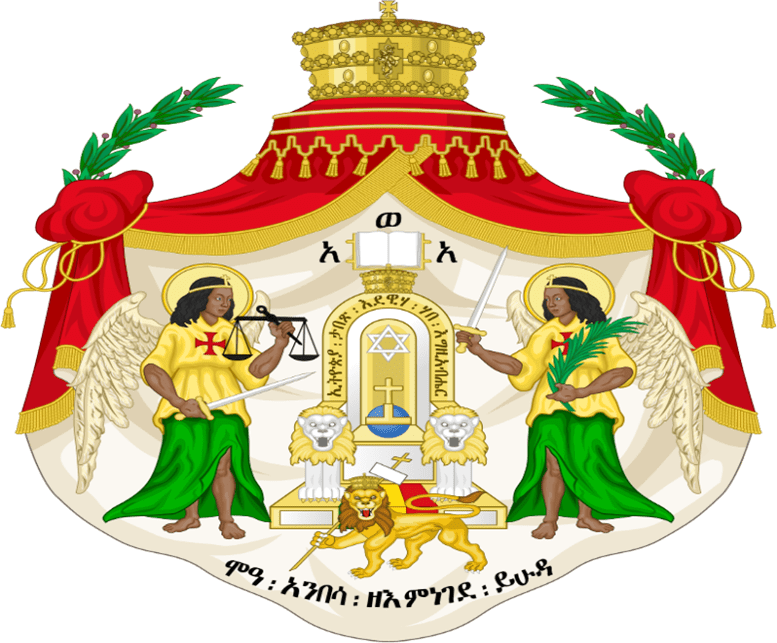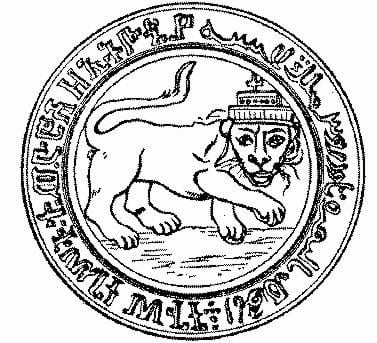By Adam Simmons
‘Ethiopia’ is an ancient toponym that dates to at least the twelfth century BCE. However, it did not refer to the region of the modern-day country until many centuries later. This think piece will look at how modern Ethiopia came to call itself ʾItyoṗya (ኢትዮጵያ). This development was a process that occurred over three millennia but which only began in Ethiopia about c.1300 and was only finally cemented on the global scene during the reign of Menelik II, 600 years later. Yet, it remains to be commonly found in scholarship that appearances to the toponym ‘Ethiopia’ in sources dating to before the fourteenth century refer to the earlier, particularly Christian, kingdoms which inhabited modern Ethiopia and Eritrea, namely ʾAksum (c.100 BCE-c.900 CE; the rulers of ʾAksum converted to Christianity by the mid-fourth century) and Bǝgwǝna (the kingdom ruled by the so-called Zagwe dynasty, c.900-1270). By taking a less conflated approach to the toponym, a much more nuanced history of north-east Africa can be relayed.
The history of the toponym of ‘Ethiopia’ has two distinct discourses: a pre-Christian and a Christian one. The pre-Christian ‘Ethiopia,’ which appears in Greek and Latin texts, is most commonly referred to as a large, yet vague, region, usually north-east Africa, the Sahara, or even the Indian subcontinent. While it could be associated with the kingdom(s) in modern Sudan, this association was made much more explicit, specifically in biblical texts. The third-century BCE Greek translation of the Hebrew Bible – the 70-book Septuagint, which makes up the Old Testament – opted to directly translate the Hebrew toponym Kūš into Aithiopia in Greek. ‘Kush’ had long been the toponym for Sudan, both by those resident in Sudan and elsewhere, such as Egypt and Mesopotamia. The kingdom(s) of Sudan (successors Kerma, Napata, and Meroë) then became the kingdom(s) of ‘Ethiopia.’ Importantly, this did not refer to the successor kingdoms of modern Eritrea and Ethiopia, namely Dʿmt and ʾAksum. Sudanese Ethiopia gained prominence in biblical lines such as Psalm 67(68:31) and was reaffirmed in Acts 8:26-39 regarding the baptism of the eunuch of the Sudanese queen of Meroë, known in the Bible as Queen Candace, by the apostle Philip in the first century CE. These lines would later gain great importance in Solomonic Ethiopia. Still, ʾAksum, the Eritrean/Ethiopian kingdom, did not claim an association with either Kush or Ethiopia even after its official Christian conversion in the fourth century. In fact, ʾAksumite sources associate Kush/Ethiopia with its neighbor in Sudan and not itself.
The decline of ʾAksum, seemingly over by sometime in the tenth century, remains obscure. Its successor, the Kingdom of Bǝgwǝna, which was centered on the region of Lasta in the north of modern-day country Ethiopia, also did not claim an association with Ethiopia as far as the current evidence suggests. Meanwhile, in Sudan, the Sudanese kingdoms of Nobadia, Makuria, and Alwa, which had been officially Christian since the mid-sixth century, united as Dotawo around c.1100. Nubian sources are too fragmentary to trace how it associated itself with Kush/Ethiopia, but it is clear that external writers maintained this belief. It was for precisely this reason that the toponym ‘Abyssinia’ appears in European texts from the twelfth century – a misunderstanding of al-Ḥabaša in Arabic as well as other comparative toponyms, such as Ḥabašat (Gǝʿǝz) and Ḥabaš (Hebrew and Syriac) – to clarify it from Ethiopia (Nubia). Still, no evidence points to either Ethiopians or external observers associating the kingdom that would become Ethiopia with ‘Ethiopia’ by the twelfth century.
The Solomonic dynasty’s rise to power in 1270 coincided with a period of turmoil within Nubia, particularly brought by the Mamlūks of Egypt but also likely by inconsistent Nile floods and repeated outbreaks of plague. The Mamlūks had seized power in Egypt in 1250 and reigned until 1517 before themselves being conquered by the Ottomans. Before this period, the ruler of Nubia, the ourou, had long been viewed as the regional protector of north-east African Christians by Eastern Christians, including by those of Ethiopia. However, one of the early claims Solomonic Ethiopian rulers made is to position themselves as the new regional protector of north-east African Christians. This was despite evidence suggesting that Dotawo remained a regional power until the early seventeenth century – though its last known ruler, Joel, only reigned up until the 1480s. Yet, after c.1300 Dotawo could not prevent its position in Christian discourse from being replaced by Ethiopia. In Ethiopia, its new Ethiopian identity was cemented by the translation of the Kəbrä nägäśt into Gǝʿǝz from Arabic during the reign of ʿÄmdä Ṣǝyon (r. 1314-44). This text told the foundation narrative of the Solomonic dynasty and its lineage from King Solomon and the Queen of Sheba via their son, Menelik, the first king of Ethiopia (importantly given as ʾItyoṗya in the text as it was following the example of ʿÄmdä Ṣǝyon that subsequent rulers fashioned themselves as rulers of ʾItyoṗya, the first to do so which can be accurately dated). Indeed, the Kəbrä nägäśt was explicit in tying Solomonic descent to the rule of Ethiopia, not least in the line:
ወከመዝ፡ሢመቱ፡ለንጉሠ፡ኢትዮጵያ፡ሎቱ፡ወለዘርኡ፡እስከ፡ለዓለም።
“For so is Ethiopia the land of the nǝguś and his descendants forever” (Kəbrä nägäśt, Ch. 92).
It was also during the reign of ʿÄmdä Ṣǝyon that the first period of expansion under its Solomonic nägäśt for the kingdom began, particularly in the north, south, and east, further gaining regional prominence in the process which his successors across the centuries built on. His exploits were also enshrined in the earliest example of a surviving chronicle written about a ruler and their reign in the Gǝʿǝz corpus. This legacy would last for the remainder of the dynasty, as can be seen in the below coat of arms employed by Emperor Menelik II (r. 1889-1913); it embodies all that the Solomonic dynasty of Ethiopia portrayed itself to be, among other things, the conquering lion of Judah in front of the throne of Solomon and its association with Psalm 67(68):31: ‘Ethiopia will reach out its hands to God’, displaying Ethiopia as among the earliest followers of the Christian God.
From the early fourteenth century, Ethiopia was ʾItyoṗya, adopting multiple aspects of Sudanese history into its identity. For example, Ethiopians expressed how their ruler was of Ethiopia, not Abyssinia, and that the biblical Queen Candace had resided at ʾAksum despite historically residing at Meroë in Sudan. The narrative of continuation was being clearly refined in both Ethiopia and particularly to those in Europe, who would come to forget about Nubia in favor of Ethiopia via increased engagement with Ethiopia, notably between 1402 and 1633. This period witnessed embassies and other interactions being exchanged between Ethiopia and various European kingdoms – namely, Portugal, Aragon (in Spain), France, the Holy Roman Empire, and Italian city-states (particularly Venice and Rome) – ultimately resulting in a Portuguese-led Jesuit patriarchate being established in Ethiopia from 1555 until their expulsion in 1633. This came at a similar time as Portuguese and Italian Jesuits travelled across the world to the Americas, China, India, and Japan.
Following the fourteenth century, Ethiopia and Europe remained united in Ethiopia’s name, though Europeans also continued to refer to the kingdom as ‘Abyssinia.’ However, as ‘Abyssinia’ remained the principal toponym for Ethiopia in Western Europe, al-Ḥabaša, Habeş, Ḥabaš remained in Arabic, Turkish, and Hebrew sources, such as on maps, until the nineteenth century. Not everywhere knew Ethiopia as ‘Ethiopia.’ Indeed, even within Ethiopia the language employed designated the toponym used. For example, the seal of Tēwodros II (r. 1855-68) refers to him as ruler of ʾItyoṗya (ኢትዮጵያ) in Gǝʿǝz, but ruler of al-Ḥabaša (الخبسة) in the accompanying Arabic.
It was only after the reign of Emperor Menelik II that we find the introduction of ʾĀthyūbīā, Etiyopya, and ʾEtiyowpiyah in Arabic, Turkish, and Hebrew respectively globally. Menelik’s victory over Italy at the Battle of Adwa in 1896 cemented Ethiopia’s regional sovereignty and ability to influence global intellectualism following Italy’s failed attempts to expand its influence beyond Italian Eritrea. Italy’s interest in the region began officially following the government takeover of the port of Assab in 1882, after the Italian shipping company, Rubattino Shipping, purchased it from local rulers. The occupation of Massawa, a key Eritrean port, in 1885 was the precursor which led to the Battle of Adwa between Italy and the Ethiopian Empire the following year. It was not for a further three years, however, until the Treaty of Wuchale was signed between these countries in 1889 that the Italian colony of Eritrea was established. The colony was integrated into Italian East Africa in 1936 before its loss in World War II to Ethiopian and British forces in 1941 ended Italian colonialism in the region. Tracking when exactly the whole world universally adopted the toponym ‘Ethiopia’ for the modern country is difficult to pinpoint. Still it is clear that it only happens following the nineteenth century. Yet, the history of the toponym has a much longer and more varied history than that.
Adam Simmons is a Leverhulme Early Career Fellow at Nottingham Trent University who specialises in the history of Africa, particularly North-East Africa, between the fourth and fifteenth centuries. He is author of Nubia, Ethiopia, and the Crusading World, 1095-1402 (Routledge, 2022).
Edited by Tom Furse
Featured Image: The Church of St. George at Lalibela (Wiki Commons).






